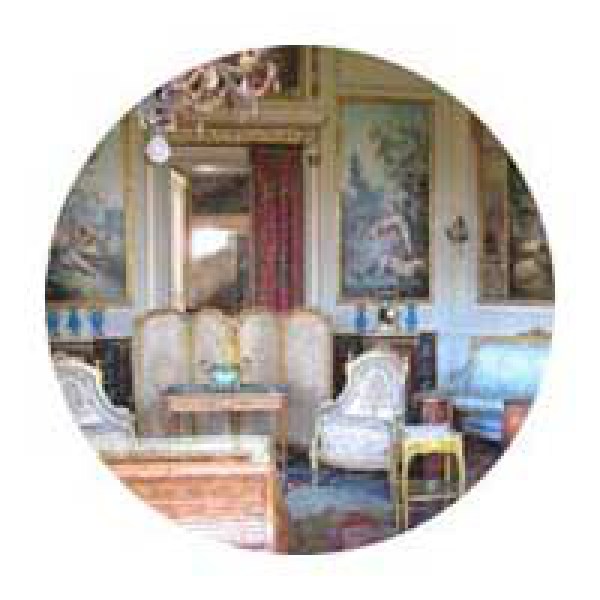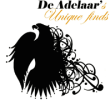Baroque, Rococo, Louis XV- XVI
Baroque and Rococo
Baroque style was hugely popular in the 17th century, it influenced everything from architecture to music.
Rococo style peaked during 1700 and 1780 in western Europe and the name Rococo means 'rocaille' in French
At first glance, Baroque and Rococo furniture styles seem almost indistinguishable from one another, and can perfectly be combined together
Both styles are filled with complexity and opulent furnishings, extravagant ornamentation, exuberant theatrical decor intricate with elegance, granduer and luxurious fabrics like velvet and damask, the lush and subtle frames with the cartouches, garlands and ornaments, cieling and walls with a lot of stucco, paintings and lots of gilding
Whereas Baroque furniture is
- complex designed, strictly symmetrical and characterized as dramatic, heavy, opulent,
- luxurious with rich bold contrasting colors, gilded and ornamental accessories, high-end textiles, decorative upholstery, which fastened with nails with big heads
- chaise longues – high-cushioned arms that were raised and lowered to form a daybed
- extravagance was showcased with elaborate carvings of floral motifs or figures.
- tables were often covered with the tableclot, the desks and chest of drawers was being developed too.
- oversized and ornately carved, painted, gilded and inlaid wood with precious materials such as silver, ivory, mother of pearl and ebony
- oak cupboards – paneled and ornamented
- buffets – set into arched niches in dining rooms and displaying silver and glass
- bookcases – with open shelving, standard in libraries
- lacquered cabinets – often set on gilded or silver stands
- throne-like chairs and marble-topped tables, both with legs shaped as cherubs, mermaids, titans, dolphins or eagles.
- grandiose bed hangings and window treatments define the style. There are four-poster bed with graceful curtains.
- hull furniture design that called cabinet usually were made of black ebony.
- wood sometimes painted to upgrade its look: pine to resemble oak, oak to mimic walnut and other woods to look like marble or tortoise shell.
- Classical busts and andirons in the fireplace
- Blue-and-white Delftware vases and ginger jars
- Silver teapots, plates and urns for requisite glitter
- Wall sconces made of silver or brass with metal or mirror back contrive to reflect light.
- Carved or gilded wood, rock-crystal, silver or brass epitomize Baroque opulence.
- Large candelabras, chandeliers and candle wall sconces illuminate rooms.
- Baroque-styled chandeliers are used for lighting instead of decoration, hang low to get the most light from burning candles
- Multiple ornate framed mirrors with gold gilding accent, also on statues and pottery, lavish wall paneling with elaborate floral carvings.
- Displays of coins, medals, manuscripts, shells and precious stones were a 17th century craze
The Baroque style was use widely in church decoration
The ceilings were decorated with images of putti (little boys) and plant motifs in wall decorations
Motifs inspired by nature such as plant motifs scrolling acanthus leaves, scrolling floral elements and shells adorn furniture and plaster molding along ceilings and walls.
Newly introduced Indian cotton was reproduced in block-printed patterns of stripes, checks and flowers.
The wealthy hung wall tapestries of velvet, silk damask and leather, stamped, tooled or gilded.
Wall coverings, table linens and cushion covers were coordinated in fabric and design – tasseled and embroidered with silver and gold threads.
Also natural and partly artificial marble and marquetry were used during facing the walls, floors and table tops
Door frames, Overdoors, crests lampbrequin, crowing cornice, initials and monograms looked especially effective.
Rococo furniture is more delicate and feminine than Baroque furniture
- often made of teak and mahogany wood or gilded and upholstered in leather, brocade or velour
- slender twisted curvaceous and more baluster cabriole formed legs
- more organically formed seats with wider arms and balloon backs and chairs with upholstered and open backs
- heavy and asymmetric ornamentation and decorations, dominant circles, spirals and ovals, sculptural S- and C-scrolls, more fluid andorganic forms and natural curves with intricate carvings of leaves, shells trees and flowers
- use of brocatelle and flowered or painted silks and featured dreamy depictions of fountains, garlands, and shells
- combination of pastel color palette such as yellow, pink, ivory and gold, azure blue and cream is a signature mark of this style
- can be mixed with other flamboyant and intense colors in combinations that might shock like deep red, indigo, dark green, raspberry, ochre yellow, purple, strong blue and umber.
- parlor sets can include sofas or settees in numerous styles, center and side tables with marble tops
- tête-à-tête conversational sofa, and the méridienne settee or daybed, sometimes sold in facing pairs
- bedroom sets included intricately carved bed frames, either in two or four parts, and matching side tables.
- other accessory pieces made in this style included piano stools, tilt-top tables, card tables and sewing tables.
- garden furniture became popular such as cast iron pieces with crape and leaf paterns or a cartouche attached to the back
Rococo Revival pieces are also referred to as Louis XV or Louis XVI style.
A great example of the Rococo style is showcased at the Louis XIV Palace at Versaille
Baroque and Rococo furniture designs also share some Asian influences.
Try to find some exotic chinoiserie and other items of Far Eastern orientation, such as lacquered boxes or porcelain,look for designs of dragons, entwined trees, birds and butterflies.
Baroque and Rococo can be combined with modern, traditional, bohemian, and shabby chic styles.
Neem eens een kijkje op mijn pinterest foto-pagina vol met inspiratie en interieur ideeën in deze stijl







